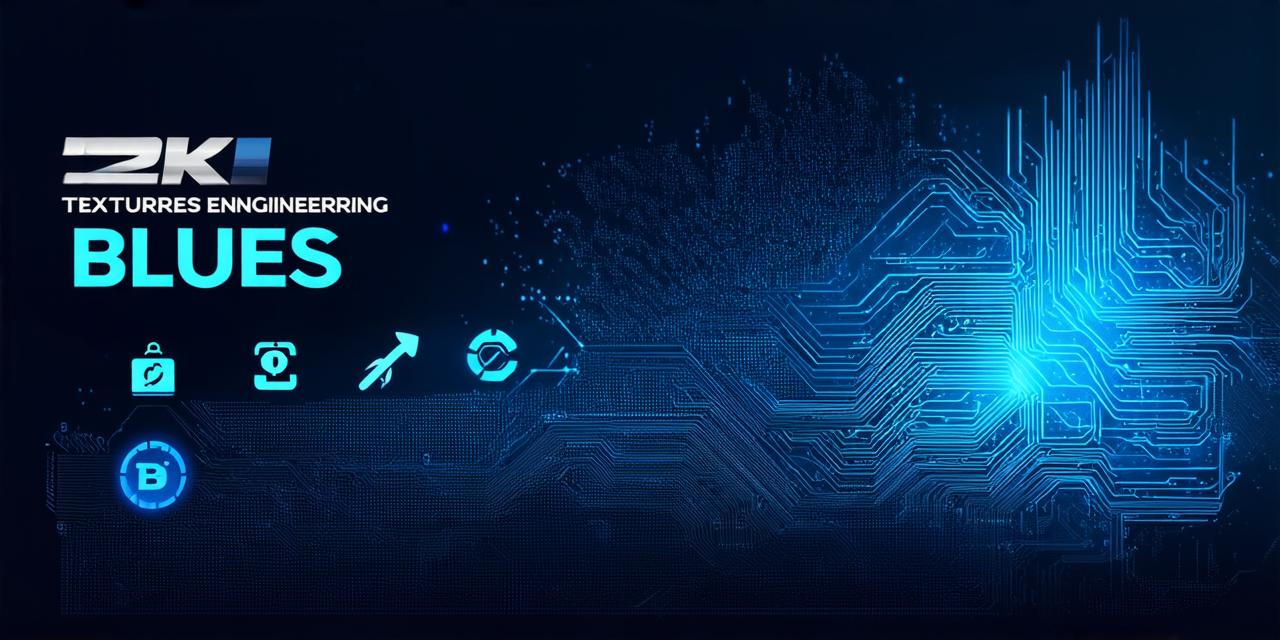Introduction
Blockchain technology is rapidly gaining traction across various industries due to its decentralized, secure, and transparent nature. As the demand for blockchain developers continues to grow, understanding the basics of blockchain engineering has become crucial.
In this comprehensive guide, we will explore what blockchain engineering entails, the different types of blockchain systems, and how they work. We will also discuss the key concepts and tools used in blockchain development, including smart contracts, consensus mechanisms, and cryptographic protocols.
What is Blockchain Engineering?
Blockchain engineering refers to the process of designing, developing, and implementing blockchain-based systems. It involves understanding the underlying principles of blockchain technology, as well as the various tools and techniques used in blockchain development. Blockchain engineers are responsible for designing and building secure, scalable, and efficient blockchain applications that meet the needs of their clients or end-users.
Types of Blockchain Systems
There are several types of blockchain systems, each with its unique features and characteristics. The most common types include:
- Public Blockchains: Public blockchains, such as Bitcoin and Ethereum, are open to anyone and allow anyone to participate in the network. They are decentralized and operate on a consensus mechanism that ensures the integrity of the data stored on the blockchain.
- Private Blockchains: Private blockchains are restricted to a specific group of participants, such as employees or members of an organization. They offer greater privacy and control over who can access and modify the data stored on the blockchain.
- Hybrid Blockchains: Hybrid blockchains combine the features of public and private blockchains. They allow for both public and private access to the network, providing the benefits of both models.
- Distributed Ledger Technology (DLT): DLT refers to any technology that uses a distributed ledger to store and manage data. It is not necessarily a blockchain, but it shares many of the same principles and characteristics.
Key Concepts in Blockchain Engineering
1. Consensus Mechanisms: A consensus mechanism is a protocol used by a blockchain network to validate transactions and ensure that all participants agree on the state of the ledger. Common consensus mechanisms include proof-of-work (PoW), proof-of-stake (PoS), and delegated proof-of-stake (DPoS).
2. Smart Contracts: Smart contracts are self-executing agreements written in code that automatically enforce the terms of an agreement between two or more parties. They can be used to automate various tasks, such as payment processing, identity verification, and supply chain management.
3. Cryptographic Protocols: Cryptography is a set of techniques used to secure data and communications on a blockchain network. It includes encryption, hashing, and digital signatures, which are used to protect the privacy and integrity of the data stored on the blockchain.
4. Block Validation: Block validation is the process of verifying that a new block has been mined correctly and meets the criteria required to be added to the blockchain. It involves checking the proof-of-work or proof-of-stake provided by the miner, as well as ensuring that the transactions included in the block are valid and do not conflict with any existing data on the blockchain.
5. Decentralized Storage: Decentralized storage is a key feature of blockchain technology, allowing for the secure and transparent storage of data without the need for a central authority or intermediary.
Case Studies in Blockchain Engineering

1. IBM Food Trust: IBM Food Trust is a private blockchain network that allows for the tracking and verification of food products from farm to table. The system uses smart contracts to automate various tasks, such as supplier onboarding, product authentication, and quality assurance. It has been implemented by major food retailers and manufacturers, including Walmart and Nestle, to improve supply chain transparency and reduce fraud.
2. MediLedger: MediLedger is a private blockchain network that allows for the secure and transparent tracking of pharmaceuticals from manufacturer to patient. The system uses smart contracts to automate various tasks, such as product authentication, quality assurance, and distribution tracking. It has been implemented by major pharmaceutical manufacturers, including Merck and Pfizer, to improve supply chain transparency and reduce counterfeiting.
3. Bitcoin: Bitcoin is the most well-known cryptocurrency and decentralized payment system in the world. It uses a public blockchain and a proof-of-work consensus mechanism to validate transactions and maintain the integrity of the ledger. Bitcoin has been adopted by major retailers, such as Overstock and Microsoft, for payments and as a store of value.
Best Practices for Blockchain Engineering
1. Security: Security should be a top priority in blockchain engineering, as blockchain networks are often targeted by hackers and cybercriminals. This includes implementing strong encryption protocols, regularly updating software and firmware, and conducting regular security audits.
2. Scalability: Blockchain networks must be able to scale to meet the demands of their users. This includes designing systems that can handle large volumes of transactions and data, as well as optimizing network infrastructure for performance.
3. Interoperability: Blockchain networks should be designed with interoperability in mind, allowing for seamless communication and integration with other blockchain networks or traditional systems.
4. Regulatory Compliance: Blockchain networks must comply with relevant regulations and laws in the jurisdictions where they operate. This includes understanding and complying with anti-money laundering (AML) and know-your-customer (KYC) regulations, as well as tax requirements and intellectual property laws.
5. User Experience: Blockchain applications should be designed with the end-user in mind, providing a user-friendly interface and seamless integration with existing systems
Conclusion
Blockchain engineering is a rapidly evolving field that requires a deep understanding of the underlying principles of blockchain technology. By mastering key concepts such as consensus mechanisms, smart contracts, and cryptographic protocols, blockchain developers can design and build secure, scalable, and efficient blockchain applications that meet the needs of their clients or end-users.
FAQs
1. What are the key differences between public and private blockchains?
Public blockchains are open to anyone and allow anyone to participate, while private blockchains are restricted to a specific group of participants.
2. How do consensus mechanisms ensure the integrity of data on a blockchain?
Consensus mechanisms involve protocols that validate transactions and ensure that all participants agree on the state of the ledger, which helps to prevent fraud and errors.
3. What are smart contracts in the context of blockchain engineering?
Smart contracts are self-executing agreements written in code that automatically enforce the terms of an agreement between two or more parties. They can be used for a variety of tasks, such as payment processing and supply chain management.
4. How do cryptographic protocols protect data on a blockchain?
Cryptography involves encryption, hashing, and digital signatures, which are used to protect the privacy and integrity of the data stored on the blockchain.
5. What is decentralized storage in the context of blockchain technology?
Decentralized storage allows for the secure and transparent storage of data without the need for a central authority or intermediary, making it an important feature of blockchain technology.
